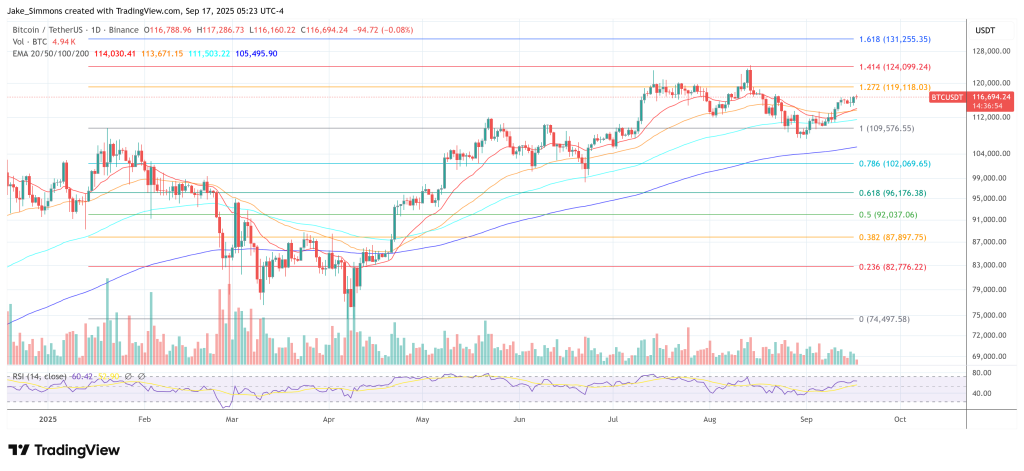Arthur Hayes Triggers $1M Bitcoin Prediction: Fed Just Pulled The Bullish Lever
Fed policy shift ignites crypto billionaire's million-dollar BTC forecast.
The Trigger Pull
Arthur Hayes declares the Federal Reserve's latest move sets the stage for Bitcoin's historic rally toward seven figures. Monetary policy changes create perfect conditions for digital gold's explosive growth.
Market Momentum Building
Institutional adoption accelerates while traditional finance struggles with yet another predictable policy pivot. Crypto markets respond with renewed vigor as smart money positions for the coming surge.
Because nothing says 'stable monetary policy' like central bankers suddenly discovering digital assets during election years.
What Yield Curve Control Means For Bitcoin
On X, several market voices quickly co-signed the framing. Bitwise CIO Matt Hougan simply replied, “Agree.” Macro investor Lawrence Lepard reacted, “Wow! Miran saying the quiet part out loud!” Others noted they’ve been flagging the “third mandate” for months.
Mel Mattison highlighted the statute in June, writing that keeping the long end “moderate” is “just as much part of their mandate as are price stability and unemployment,” and argued that in a conflict of goals—as during Covid—policymakers could “sacrifice one to get two,” i.e., use balance-sheet tools to stabilize the long end and employment even if it risks higher inflation. His point underscores the operational hinge in Hayes’s thesis.
What YCC WOULD mean in practice is contested but conceptually clear. Unlike standard QE—which sets a purchase size and lets yields float—YCC targets specific yields on medium- or long-dated Treasuries, enforcing caps with unlimited buying if needed. The St. Louis Fed describes YCC as “imposing interest rate caps on particular maturities,” a framework seen in Japan since 2016 and, briefly, in Australia. Such a regime would aim to arrest disorderly jumps in long rates that complicate debt service and risk transmission; critics view it as a soft form of financial repression with inflationary tail risks.
Hayes has tied this macro lever to an extreme bitcoin upside for years. In 2022 he wrote that “YCC = $1mm BTC,” a refrain he revived in 2023 and again today. The logic is straightforward in his telling: if the Fed caps long-term yields while fiscal deficits remain wide, real yields are suppressed and fiat debasement accelerates, directing marginal flows into hard-cap assets like Bitcoin. Whether that causal chain unfolds is an open question, but the call is consistent with his prior essays and public posts.
Bloomberg’s piece did not declare YCC policy imminent; instead it documented how traders are re-pricing duration risk in light of Miran’s remarks about “moderate long-term interest rates” and the political context surrounding the Fed.
Still, the statutory anchor gives the “third mandate” narrative more than rhetorical weight. As the Fed convenes its September meeting—with a rate cut widely anticipated and the Board’s composition in flux—debate over whether the institution will ultimately be pushed from guidance to control on the long end has moved from fringe threads into mainstream coverage.
For Bitcoin, Hayes argues that merely acknowledging that path is the “trigger.” For markets more broadly, the stakes lie in whether managing the curve becomes a policy choice—or a policy necessity.
At press time, BTC traded at $116,694.


